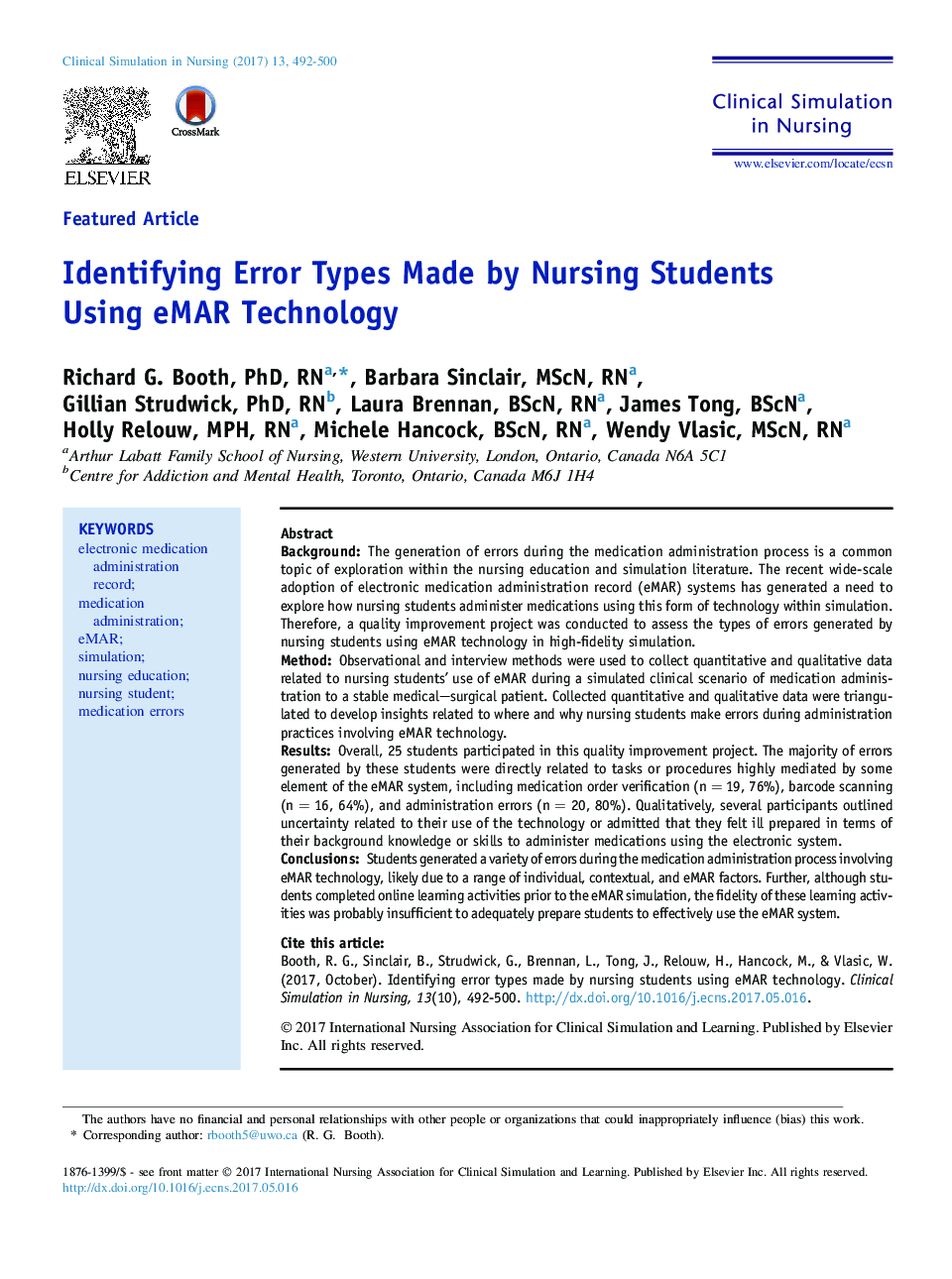| کد مقاله | کد نشریه | سال انتشار | مقاله انگلیسی | نسخه تمام متن |
|---|---|---|---|---|
| 5567546 | 1403636 | 2017 | 9 صفحه PDF | دانلود رایگان |

- Electronic medication administration record (eMAR) technology used in simulation may be confusing for new learners.
- Errors generated by students are typically related to manipulation of the eMAR.
- Development of new teaching-learning approaches involving eMAR in simulation should be considered.
BackgroundThe generation of errors during the medication administration process is a common topic of exploration within the nursing education and simulation literature. The recent wide-scale adoption of electronic medication administration record (eMAR) systems has generated a need to explore how nursing students administer medications using this form of technology within simulation. Therefore, a quality improvement project was conducted to assess the types of errors generated by nursing students using eMAR technology in high-fidelity simulation.MethodObservational and interview methods were used to collect quantitative and qualitative data related to nursing students' use of eMAR during a simulated clinical scenario of medication administration to a stable medical-surgical patient. Collected quantitative and qualitative data were triangulated to develop insights related to where and why nursing students make errors during administration practices involving eMAR technology.ResultsOverall, 25 students participated in this quality improvement project. The majority of errors generated by these students were directly related to tasks or procedures highly mediated by some element of the eMAR system, including medication order verification (n = 19, 76%), barcode scanning (n = 16, 64%), and administration errors (n = 20, 80%). Qualitatively, several participants outlined uncertainty related to their use of the technology or admitted that they felt ill prepared in terms of their background knowledge or skills to administer medications using the electronic system.ConclusionsStudents generated a variety of errors during the medication administration process involving eMAR technology, likely due to a range of individual, contextual, and eMAR factors. Further, although students completed online learning activities prior to the eMAR simulation, the fidelity of these learning activities was probably insufficient to adequately prepare students to effectively use the eMAR system.
Journal: Clinical Simulation in Nursing - Volume 13, Issue 10, October 2017, Pages 492-500